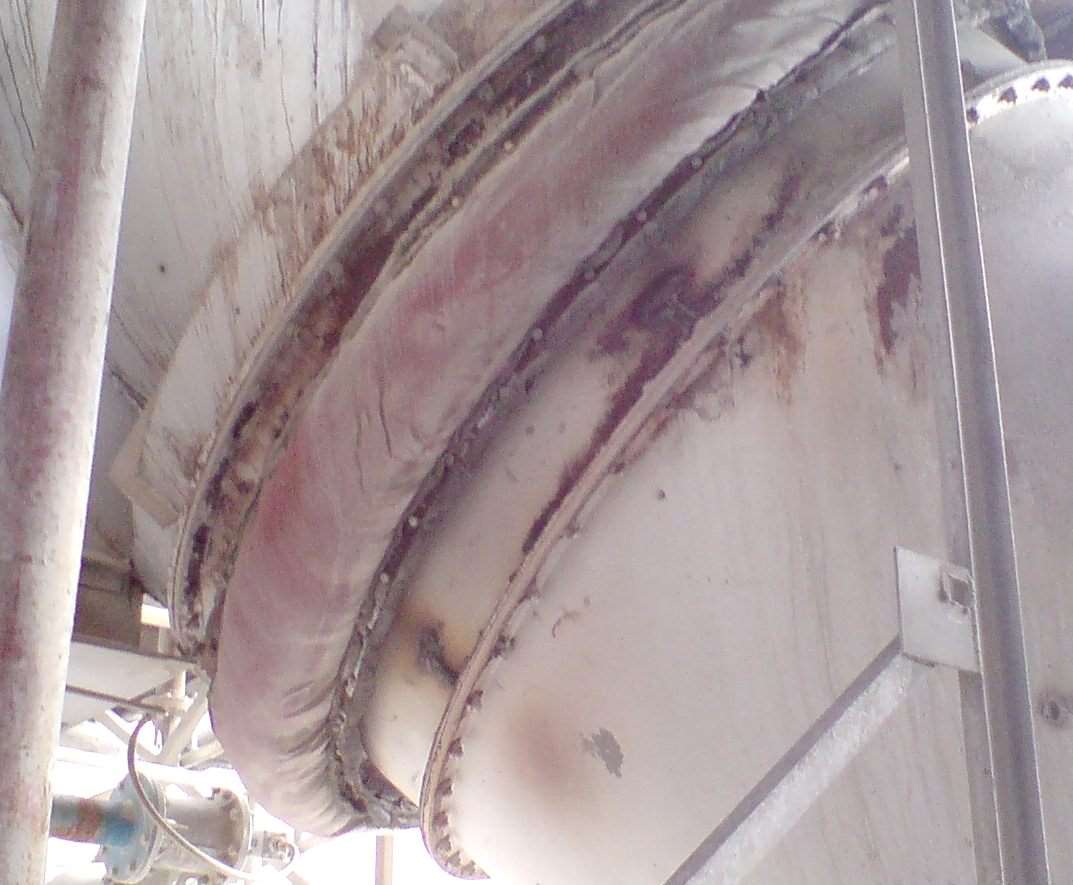Many factors determine how well a manufacturing plant performs. Those that perform best are qualified to become a Top Plant.

Exceptional manufacturing companies are more than just fabrication cells, assembly lines, or loading docks—they are departments working together in harmony. Successfully putting proven management philosophies into real-world action welds values and work ethic to form a cohesive culture at the Lincoln Electric Co. in Cleveland. The company’s machine division is the recipient of the 2013 Plant Engineering magazine Top Plant Award.
Lincoln Electric Co. is the world’s largest manufacturer of arc welding equipment and consumables as well as a technological leader in the welding market. The company’s machine division and the global headquarters are located in Euclid, a suburb of Cleveland, with a plant in nearby Mentor. The machine division occupies a little more than 800,000 sq ft of the 1.5 million-sq-ft main facility; the consumable division occupies the rest.
The 14 departments within the machine division at Lincoln Electric are divided into supply, assembly, and support departments. The four supply departments provide work in progress (WIP) to the four assembly departments. The six support departments are the supply management, production planning, quality assurance, manufacturing engineering, material handling, and time study groups. The material handling group is also responsible for the storeroom, replenishing the manufacturing floor, and spare parts fulfillment. The group also includes a tool room responsible for die repair or buildup, fixtures or work holding devices, and plastic molded parts. The time study group performs the time-and-motion studies that become the benchmarks for completing every task in the facility.
Incentive management, entrepreneurial environment
Manufacturing and plant floor employees agree that the company’s incentive management system and the entrepreneurial environment top the list of the many attributes that make Lincoln Electric’s machine division an exceptional plant. “Incentive management is the cornerstone of Lincoln Electric,” said Geoff Lipnevicius, general manager of the machine division. “It drives a culture that recognizes that our people are our greatest asset. It gives people an incentive to perform. It’s a very big aspect of the company and it’s what really drives the machine division to be an exceptional plant.”
For many people, when the word “piecework” is mentioned, “sweatshop” comes to mind. At Lincoln Electric, these words are not synonyms—and they never have been. Piecework, guaranteed employment, and the highly anticipated annual employee bonus are elements that marry the company’s incentive management system and the entrepreneurial environment.
In most cases, pieceworkers at Lincoln Electric are like entrepreneurs because they get paid only for the number of quality pieces they produce. Every job has standards that determine the average output from an average worker per unit of time. “We go through time-and-motion studies on every task in our facility,” Lipnevicius said. “We ensure that when we say a task takes 30 seconds to complete, the assessment is fair and accurate.”
Lincoln Electric has not laid off any permanent employees who meet the company’s performance standards due to lack of work or economic conditions since 1948. The “Guaranteed Continuous Employment Plan” was approved by the board in 1958. “Regardless of the cyclical nature of the business, we don’t lay off people,” said Doug Lance, vice president of operations at Lincoln Electric. “We only discharge people for poor performance just as any company would. When business is slow, we have the option to transfer people into jobs where there is work. By retaining our people, we keep the talent and knowledge within the company.”
Employee flexibility can translate into substantial rewards. “We try to instill flexibility into our employees,” said Lee Seufer, plant engineering manager for Lincoln Electric’s machine division. “We reward people with a substantial profit-sharing bonus at the end of each year.”
Part of this required flexibility involves cross-training. “Employees who can run seven different machines are more valuable to us than those who can run only two,” Seufer said. “The size of the bonus depends on how an employee’s performance is rated in five equally weighted categories: output/productivity; quality; environmental, health, and safety (EHS); adaptability/flexibility; and teamwork/communication.”
The annual profit-sharing bonus has been in place at Lincoln Electric since 1934. For production workers, the merit basis is straightforward: make more, earn more. However, this model doesn’t scale for maintenance employees. For example, the best people typically tackle the toughest jobs, which usually take longer. Applying the production-oriented piecework model would work against them. “The incentive management system in the maintenance department is managed differently,” said Seth Mason, superintendent of maintenance. “We rate people in 20 categories, such as safety behavior, completed training requirements, and project leadership.”
“The incentive management system really ties everything together,” said Dave Sterio, maintenance support engineer. “It encourages the right kind of activities and behaviors. It’s what makes us unique.”
Simplified workflow
Lincoln Electric’s machine division makes three platforms of welding equipment. The newer, high-tech products are inverter-based welders. The traditional welders use the transformer/rectifier type design. Welders that are powered by engine-driven generators are included in the third platform.
Workflow through the machine division facility is simple, although the same could not be said 20 years ago. “We’re laid out in bays from North to South,” said Dave Perrin, chief plant engineer at Lincoln Electric. “Raw materials come in at the north end of the building. Sheet metal comes right off the truck dock to its point of use where the operators use laser cutting machines, punch presses, and forming equipment to fabricate the parts that will become welding machines. After the fabricated parts are painted, they are assembled into finished products, tested, and then carted to shipping.”
Standard products are typically routed to the distribution center. “The bulk of what we sell is make-to-stock,” Seufer said. “We have some made-to-order products. There are some specials that come through the operation as well. For example, somebody may need a special type of electrical connection for a special type of welding that they’re doing. Someone may need special or custom software that allows them to weld a special application.”
The machine division uses both assembly lines and cells to manufacture welders. Seufer said, “Depending on the market we’re serving and the type of welder we’re building, we might be in a low-volume, high-mix module or we might be in a high-volume, low-mix module. The module we’re in at the time dictates how we make our products.”
“I think Lincoln Electric is set up very well in how we develop our products and processes to allow us to be successful,” Perrin said. “The physical layout of our facility was designed intentionally to locate the engineering departments in the center of the plant—right in the middle of the manufacturing area. By locating plant, manufacturing, and R&D engineering as well as new product marketing departments in the middle of the manufacturing area, there’s a direct line of communication between engineers, supervisors, and shop personnel on the production floor.”
Journey toward Lean
“Our goal is to make welding the most cost-effective method to join materials together,” said Lipnevicius. “We have to constantly create increasingly more value in our products for lower cost, and we have a very good team that drives performance here.”
Quality has always been an emphasis at Lincoln Electric. However, manufacturing high-quality welding equipment has not always been as efficient as it is today. “We recognized around 1999 that we were very busy,” Seufer said. “We decided to move from a push strategy to a pull strategy. We chose to stock some of every product in our finished goods warehouse, watch what customers bought, and replenish those items. In doing so, we dramatically reduced inventories. We started putting our efforts toward what the customers were buying, not what we hoped they would buy.”
Making this switch created some unique challenges for Lincoln Electric. “Our evolution into Lean started around the year 2000,” said Seufer. “Going from a push system to a pull system was the spark that got the journey toward Lean started. But believe me, swapping more than 18 acres can’t be done overnight. It’s definitely a challenge. Lean is definitely an evolution.”
“The pull system really works,” said Lance. “Our metrics measure on-time attainment: Our products are delivered to the warehouse when we say they will. Currently, our attainment numbers are running between 96% and 99% nearly every week. That’s an enormous increase from where they used to be.”
Lincoln Electric management has supported the journey toward Lean from its introduction into the company. “Lean was driven from the very top of the organization,” Seufer said. “In the past, we were very focused on direct labor. Whatever we could do to reduce labor cost was always the issue. However, we came to realize that for every labor dollar, there are many dollars of overhead. In addtition to reducing labor, we started looking for ways to reduce overhead.”
Waste reduction is a very effective way to reduce overhead. “We’re continually looking for ways to eliminate non-value-added processes and activities, such as material handling and setup time,” said Seufer. “Setup reduction is a great example. The way we used to operate, we didn’t focus on how much time it took us to set up as long as our piecework price was low. It may have taken 2 to 6 hrs to set up a press just so that we could make parts rapidly. Then we realized that creating a setup reduction program could save us a lot of money. Today, our presses are optimized for quick changeovers. Long changeovers now might take 10 or 15 min.”
Lincoln Electric also optimized the molding presses and welding cells for quick setups. “Not only did setup reduction save us a lot of money, it also freed up a lot of capacity,” Seufer said. “When you have a machine that’s not producing for 2 to 6 hr, you might as well buy another machine.”
Focusing on scrap is a good way to identify processes that might not be in control. “We do Pareto charts on everything we make” said Seufer. “If we get too much scrap out of a certain area, we may have to run more production through that area just to get the yield we need. We used this process to identify projects for waste reduction opportunities. And in the first 4 to 5 yr of the waste reduction program, we reduced scrap by about 51%.”
Working safely
WELD—an acronym for Workplace, Education, Lifestyle, Discipline—is one of the company’s horizontal safety teams. Lincoln Electric rolled out WELD in 2001 as a grassroots initiative to help improve the safety behaviors of the employees. WELD group members come from every production team. “The education element is intended to ensure that employees have the training to do their jobs,” said Bob Siktberg, EHS manager for North American operations at Lincoln Electric. “Lifestyle means keeping fit for work, eating healthy, being well rested, and stretching before doing work. The discipline—meaning self-discipline—means not taking shortcuts and risks, and not bypassing guards, for example.”
Lincoln Electric has a traditional safety committee, which is led by a machine division steering committee. While the safety committee focuses on issues such as dangerous working conditions, WELD is more of a behavior-based safety program. “For more than 10 years WELD has been one of the primary drivers in reducing our injury numbers,” Siktberg said.
“We’ve crunched the numbers,” said Lipnevicius. “Employees are most likely to get injured in the first year in the machine division. We ensure that the WELD group puts a particular focus on new employees. We rolled out a program last year that requires new employees to wear arm bands. Established employees are encouraged to make observations to help those individuals with arm bands.”
“New employees wear yellow arm bands for the first few weeks,” said Siktberg. “The WELD representatives and employee WELD members wear red arm bands. The new employees can be seen by someone driving a forklift or by supervisors. The WELD people wear the red ones because they’re the ones new employees can go to in particular.”
Lincoln Electric’s machine division places significant emphasis on near-miss reporting. “We define the phrase ‘near miss injuries’ loosely,” Siktberg said. Near misses are based on observations of conditions or situations that, unless they are dealt with, they will likely turn into accidents. For example, a water leak might turn into a slippery surface, which might turn into a slip or fall accident. Near-miss reporting is providing us with some really good chances to make corrections without there actually being a serious event.”
Near-miss reporting is a proactive approach to preventing actual incidents and another way to look at continuous improvement. “There should be many more near misses than there are actual injuries,” said Siktberg. And near-miss reporting gives us a lot of data. We have had 549 near misses to date through Sept. 30.”
Around 2009, Lincoln Electric’s machine division introduced another behavior-based observation method to enhance the WELD program. SafeTrack is a third-party program that uses a checklist on a card that employees can carry with them easily. Each team is responsible for at least two observations per person per week. “We chart the departments’ progress and we report on it quarterly,” Lipnevicius said. “We really think there is a lot of value to peer-to-peer observation. There is no discipline involved with the process and we gain a lot of good information.”
“The questions on the card are more about behaviors than about conditions,” Siktberg said. “Employees go through two days of training to become an observer. Because SafeTrack is an observation and feedback process, we’ve had very good response from it and the machine division embraces it. As of the end of October, the machine division has made 3,617 observations to date.”
“Our safety numbers are tracking well through September,” Lipnevicius said. “Our OSHA incidence rate is 2.15 and our days away, restrictions, and transfers (DART) rate is 0.72.”
“OSHA recordables include lost work days (LWD) and DART,” said Siktberg. “DART includes LWD plus any restrictions or transfers.”
“The machine division is seeing a 30% reduction in total injuries this year,” said Lipnevicius. “That’s a huge difference from last year. We know our safety programs are really having an impact. We’re seeing good traction.”
Maintenance
As with many manufacturing facilities, the machine division’s maintenance department balances its activities among reactive, preventive, and predictive maintenance. “We strive to employ preventive and predictive strategies,” said Mason. “As the work load increases, the reactive level also increases just because when the equipment runs harder, it breaks more often. When business is slow, we can do more preventive and predictive maintenance because we have enough hours to perform the work as well as more access to the equipment.”
Mason and Sterio are also responsible for energy management. “Compressed air is one of our energy conservation areas of focus,” said Mason. “Many engineers don’t understand how expensive compressed air is. Most of the energy required to generate compressed air becomes heat in the equipment room or is lost through air leaks. We’re pretty good at checking our leaks, doing our ultrasonic leak detection, and replacing our hoses because compressed air is so expensive. People just don’t realize the cost behind compressed air.”
General exhaust is another area where the machine division was able to conserve energy. “We have processes that require dust and/or heat removal,” said Mason. “Instead of the upblast roof ventilators, we decided to use specific exhaust. Roof ventilators tend to pull too much heat out of the building in the winter. Specific exhaust is applied at the point source of the dust or heat. Sometimes a ring is constructed around the point source to prevent too much heat from escaping. We didn’t physically remove the upblast fans. We still use them during the summer.”
Using specific exhaust was very effective. “On this campus, our heating load is about half of what it was 8 years ago,” Mason said. “Your exhaust can cost you a lot of money and you won’t even realize it.”
Mason and Sterio also installed a wind turbine at the main Lincoln Electric campus. “We started running the wind turbine in June 2011,” said Mason. “We received money from the American Reinvestment and Recovery Act. The 2.5 MW machine has accelerometers so we can perform vibration analysis throughout the drivetrain and monitor bearing wear. The turbine is not part of the electrical transmission grid. We feed power from it directly into our plant. Our quiescent load is about 3 MW. There is never a time that the output of the wind turbine is not being used by this campus. In a year’s time, we’ve generated about 6 million kWh. This campus uses a total of about 55 million kWh, so the wind turbine enabled us to shave about 10% of our energy purchase.”
Automation
Lincoln Electric recently acquired two large automation companies: Wayne Trail and Tennessee Rand. Wayne Trail designs flexible automated systems used in a variety of metal forming, fabricating, and joining industries. Tennessee Rand provides engineering, machining, and integrated robotic systems, and is an automation integrator with core competencies in advanced welding system design, high-quality weld fixtures, robotic integration, and process automation.
“We just started to put robots into our machining areas,” said Seufer. “We’re also putting robots into our printed circuit board manufacturing areas. We’ve had pick-and-place machines for many years. However, many people don’t think of them as being automation.”
Lincoln Electric is looking into using RFID in its machining areas. “A machining center can have as many as 60 tools in it,” Seufer said. “We want to use RFID to ensure that we have the right tool married to the right machining center position, so that if the machine grabs tool No. 17, it’s not really grabbing tool No. 23. RFID will enable the machine to read each tool as it grabs it.”
Training, workforce development
CNC, Lean, lift truck, safety, and basic print reading are just a few of the many training opportunities that Lincoln Electric provides. “We offer a lot of training,” said Lipnevicius. “We’ve authorized more than 40 different training opportunities this year. We attach deliverables to all the training we do because we want to ensure employees apply that knowledge; otherwise, they’ll lose it. Entry-level employees receive instruction that includes job hazard analysis training and basic skills classes. We’ve been doing this for 20 years, but we revamped it pretty significantly in the last year.”
The maintenance department appears to be a training ground for technical people. “We’re recruiting constantly,” said Mason. “Other departments at the Cleveland campus tend to raid us for technical people—and that’s a good thing. Our department is large enough to teach employees about safety and skilled trades. After we get them trained, they migrate to other groups. The maintenance department is becoming a pipeline into this business.”
Although Lincoln Electric has had no problem hiring good employees, Mason predicts a hiring shortfall ahead. “Unfortunately, manufacturing in general and maintenance specifically is not viewed as a glamorous job. We are working hard with the local colleges to put recruiting programs together and we’re trying to bring a little glamour to the industry,” Mason said.
“We are working with HR to come up with recruitment programs,” said Mason. “We’re visiting universities to find out what they need from us. We’ve talked with students and discovered that these kinds of jobs really aren’t even on their radar. Young people are not being told that these opportunities exist.”



